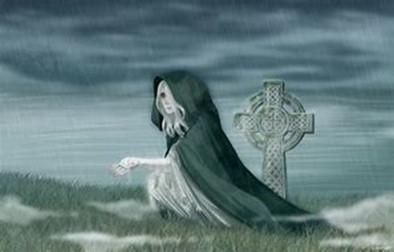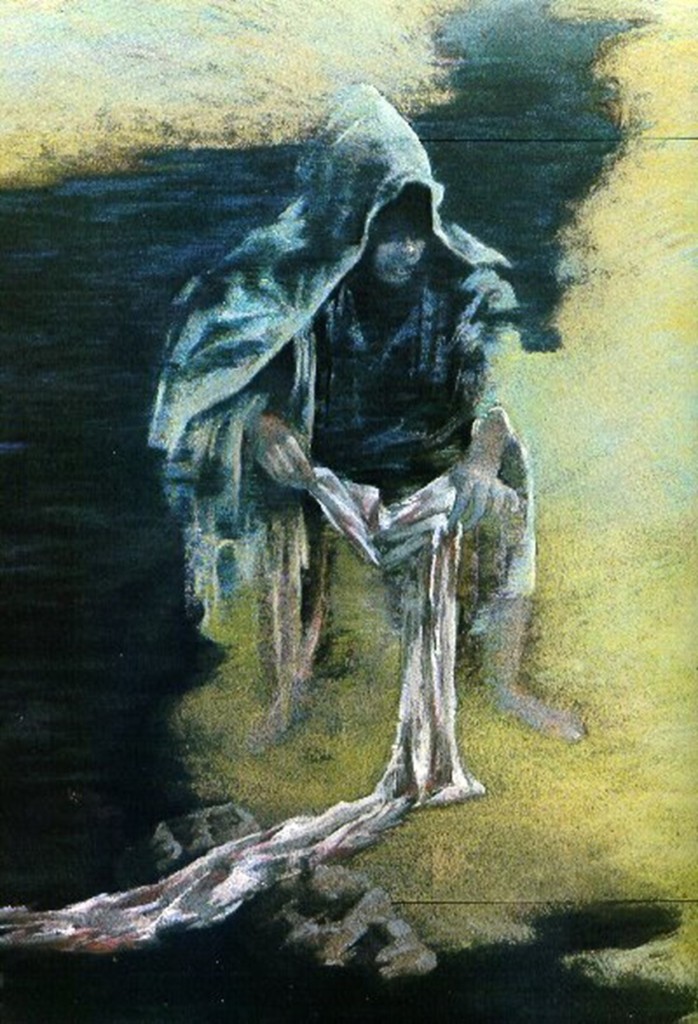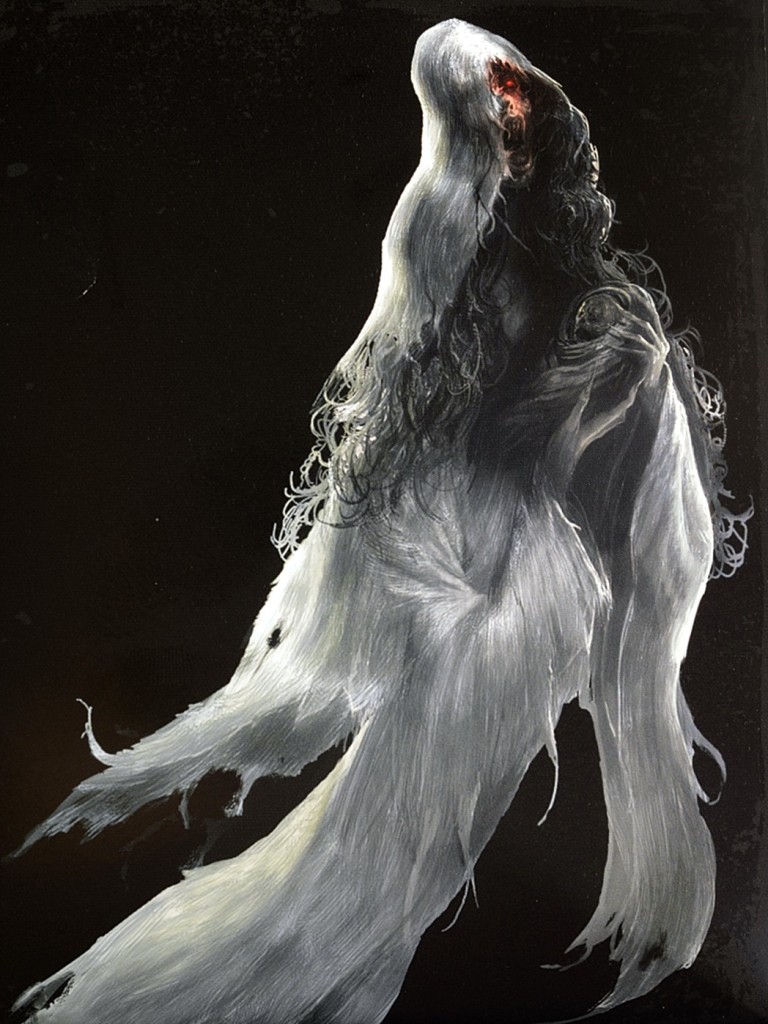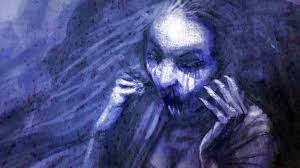The Keening Spirit
We Irish have the reputation of being very superstitious, but it is rather an exaggerated view. The truth is that we are no more superstitious than the country people of England, France, or Germany. In fact, it has been my experience that the people of the Scottish Highlands are much more attached to their superstitious beliefs and legends. What is unique about the Irish imagination is, however, that it is so vibrant that they can give Ireland’s legends an individuality that I have not found in the tales, myths and superstitions of most other peoples. Perhaps, it is our command of language that allows us to present the creatures of Irish imagination in a way that makes them appear to be so real and so original that they can become very startling to the imagination of others. The creatures born from within the Irish imagination, are often humorous, sometimes grotesque, and are regularly awe-inspiring and wonderful. In my mind the most fascinating creature of Irish legend is the weirdly-wailing Banshee, that sings her mournful cry at night, giving the family she attends a warning that one of their members is soon summoned into the world of spirits. This most dreaded spirit is called different things by different scholars of folklore, including the ‘Female Fairy’, the ‘Woman of Peace’, the ‘Lady of Death’, the ‘Angel of Death’, the ‘White Lady of Sorrow’, the ‘Nymph of the Air’, and the ‘Spirit of the Air’.

The ‘Banshee’ is quite different from the ‘Fear-shee’ or ‘Shifra’, (the Man of Peace), which brings good news and sings in a joyful mood near the house when unexpected good fortune is about to befall any or all members of the family. The Banshee, however, is really a disembodied soul of a person who, when alive was strongly attached to the family, or who had good reason to distrust and dislike its members. The Banshee’s song, therefore, may be different under different circumstances and can be inspired by opposite motives. For example, when the Banshee loves those whom she calls, the song is a low, soft chant. She is, of course, giving notice that the angel of death is near, but she is doing so with a tenderness of tone that will help reassure the one destined to die and comfort those who are left to mourn. It is more a welcome than a warning, and because its tones a are filled with celebration, it is as if the messenger spirit is bringing good news to the dying that he has been summoned to join those ancestors who are awaiting him. But, when she was alive, if the Banshee was an enemy of the family, her cry will be the scream of a fiend, howling in diabolical delight at the forthcoming death of another of her foes.
In some parts of Ireland there still exists a belief that the spirits of the dead are not taken from this world to another, and that they do not lose all their former earthly interests. It is thought that they enjoy the happiness of the saved, or endure the punishment imposed upon them for their sins, in the places where they lived while they had bodies of flesh and blood. At those times when people encounter certain problems, these disembodied spirits will display their joy or grief in a way that attracts the attention of living men and women. At weddings, for example, they are frequently unseen guests. At funerals they are always present, and sometimes, at both weddings and funerals, their presence is recognized by aerial voices or mysterious music which is almost of unearthly origin.

We believe that the good spirits wander with the living as their guardian angels, but the evil spirits restrained in their actions, and are compelled to do penance at or near the places where they carried out their bad deeds. Some are chained at the bottoms of the lakes, others are buried under ground, while others are confined in the mountain gorges. There are some that hang on the sides of precipices, while others are transfixed on the tree-tops, and others are left to haunt the homes of their ancestors, but all are waiting until their penance has been fulfilled and the hour of their release finally arrives. In County Antrim, the Castle of Dunseverick, is believed to be still haunted by the spirit of a chief, who is confined there to atone for a terrible crime he committed. Meanwhile, while the castles of Dunluce, of Magrath, and many others are similarly haunted by the spirits of the wicked dead. In the Abbey of Clare, the ghost of a sinful abbot walks and will continue to do so until his sin has been atoned for by the prayers that he unceasingly mutters in his tireless march up and down the aisles of the ruined nave.

As we have seen, the Banshee is one of those spirits who look with interest upon earthly things. They are deeply attached to the old families, or else regard all the family members with a strong hatred, and lingers about their homes to soften, or aggravate, the sorrow of the approaching death. The Banshee attends only the old leading families of Ireland, and although the descendants of those families may be brought down from their high position to the ranks of common people, through misfortune, she never leaves nor forgets them until the last member has been gathered to his ancestors in the churchyard. The MacCarthys, Magraths, O’Neills, O’Rileys, O’Sullivans, O’Reardons, O’Flahertys, and almost all the other old leading families of Ireland, have Banshees, though many representatives of these names are now in abject poverty. The song of the Banshee is commonly heard a day or two before the death of which it gives notice, although instances have been recorded of the Banshee’s song being heard at the beginning of an illness, or a course of conduct, which would result in death fatally. There is a story of a young girl who was engaged to a young man, and the moment she accepted his offer of marriage, they both heard the low, sad wail coming from above their heads. Later, the young man would desert her, she would die of a broken heart, and the night before she died, the Banshee’s song was heard, loud and clear, outside the window of her mother’s cottage. Another story records that one of the O’Flahertys, of Galway, marched out of his castle with his men on a raid, and, as his troops filed through the gateway, the Banshee was heard high above the walls of the fortress. The next night she sang again, and was heard no more for a month, at which time his wife heard the wail under her window, and on the following day his followers brought back his dead body. It is said that one of the O’Neills of Shane Castle, in Antrim, as he started out on a journey before daybreak, heard the Banshee’s cry and was accidentally killed some time after, while he was on that same journey.
Although the Banshee’s wail comes most frequently at night, there have been cases are reported of Banshees singing during the daytime, the song being often unheard by any person but the one for whom the warning is intended. This, however, is not usually the case since the notice of a death is meant for the family rather than just for the doomed individual. The Banshee is generally alone when delivering notice to a family, but on rare occasions it has been recorded that several banshees are heard singing in chorus. A lady of the O’Flaherty family, who was greatly loved by all for her social qualities, kindness, and piety, was taken ill at the family mansion near Galway. Nobody was overly concerned about the lady making a full recovery, as her illness seemed to be no more severe than a slight cold. But, after she had been lying in her bed for a day or two, several of her friends came to visit and cheer her up. Then, as the small group of friends were chatting merrily, strange sounds were heard, causing them all to tremble with fear and to turn pale as they recognized the singing from a chorus of Banshees. The lady’s illness developed into pleurisy, from which she passed away only a few days later and sweet, plaintive chorus was heard again as the spirit departed from her body. It is a great honour to be warned by more than one Banshee, and only comes to the purest of the pure.
The “Avenging Banshee” is a spirit that is greatly dreaded by members of a family against which she seeks revenge, and one noble Irish family, that I shall not name, is attended by a one of this type of Banshee. This Banshee, it is reported, is the spirit of a young girl who was deceived and afterwards murdered by a former head of this family. But, with her dying breath, she cursed her murderer and promised him that she would stay with him and his family forever. Many years passed, and the chieftain reformed his ways and the crime of his youth was almost forgotten, even by himself. Then, one night, he and his family were sitting by a huge fire when, suddenly, the most terrifying shrieks were heard outside the castle walls. They all ran out into the courtyard but could see nothing. During the night, however, the screams continued as though the castle was being besieged by demons, and the chieftain began to recognise, in the cry of the Banshee, the voice of the young girl he had murdered. The next night, the chieftain was assassinated by one of his followers, and again the wild, unearthly screams of the spirit were heard in celebration over the man’s fate. Since that night, this “Avenging Banshee” has never failed to notify the family, with shrill and happy cries of revenge, when the end-time for one of their number has arrived.
Banshees are not often seen, but those that have made themselves visible differ as much in personal appearance as in the character of their cries. The “Friendly Banshee” is usually a young and beautiful female spirit, with pale face, regular, well-formed features, hair sometimes coal-black, sometimes golden, with blue, brown, or black eyes. Her long, white clothing falls below her feet as she floats in the air, chanting her weird warning, and lifting her hands as if in tender pity, she was praying for the soul she has summoned. The “Avenging Banshee”, however, is a horrible hag, with angry and distorted features. They say that evil can be seen in every line of her wrinkled face, and her arms to call down every possible curse on the doomed member of that hated family.

Usually the only sign of a Banshee’s presence her cry, though a notable exception to this is found when it comes the O’Reardon family. The doomed member of this family is always notified of their death by a Banshee that appears in the shape of an exceedingly beautiful woman, and she sings a song so sweet and solemn as if to reconcile him to his approaching fate.
Though the Banshee does not follow members of a family that go to a foreign land, but if they die when abroad, she will give notice of the death to those who remain at home. It is said that when the Duke of Wellington died, a Banshee was heard wailing round the house of his ancestors, and during his campaigns against Napoleon, she frequently notified Irish families of the death in battle of Irish officers and soldiers. Furthermore, on the eve of the ‘Battle of the Boyne’ several Banshees were said to have been heard, singing in the air over the Irish camp, the truth of their prophecy being shown in the names of those who died the next day. How the Banshee obtains early and accurate information from foreign parts of the death in battle of Irish soldiers is yet unknown among those who study such things. One theory is that there exist, in addition to the two kinds already mentioned above, “Silent Banshees,” who attend members of old families, one to each member. It is thought that these silent spirits follow, watch, and bring back information to the family Banshee in Ireland, who then sings her sad refrain. The basis for such a theory derives from the fact that the Banshee has given notice at the family home in Ireland of those who have died in various battles fought in every part of the world. From every place where Irish regiments followed the call of British war drums, news of the prospective deaths of Irishmen has been brought home, each of which was preceded by the Banshee’s wail outside the ancestral home.
Among folklorists in Ireland this theory of the existence of the ‘Silent Banshee’ not widely accepted or well received. Going by the evidence that we have to date there are only two kinds of Banshee, and that, through supernatural means, they have knowledge of the immediate future of those in whom they are interested. At one time it was considered blasphemy to doubt the existence of the ‘Wild Banshee’ that was once alleged to have been heard in every part of Ireland. Now, in these modern times, it is recognised that the Banshee attends only the old families of Ireland and does not change to the new. The truth of this can be seen in the fact that with the disappearance of many old noble Irish names over the centuries so their Banshees appear to have gone. It seems to be in only a few remote districts in the West and North of Ireland that this dread spirit is still to be found, while in most other parts of this island the Banshee has become only a superstition. From being held with great respect and fear, this death-warning angel, has quickly sank to the level of the Fairy, the Leprechaun and the Pooka, which have become the subject for stories to amuse and terrify both the idle and the young.
